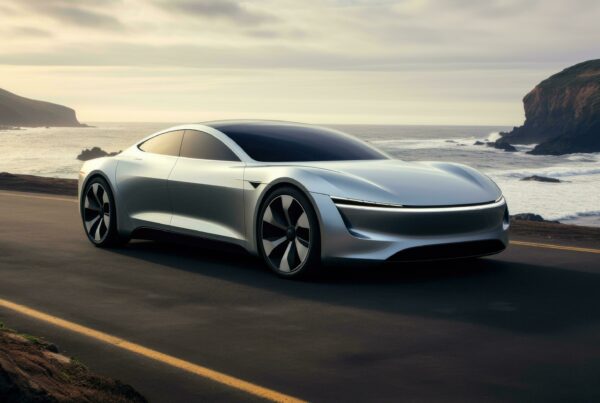Visual commerce is no longer a way to stand out from the competition – it is an expected part of the online shopping experience. The rise of shoppable content and augmented reality filters on social platforms like Instagram, TikTok and Snapchat changed the way consumers make purchasing decisions. Relying on consumers to come to a physical store or being influenced by product pages with static images no longer works. E-retailers must adapt their strategies and practices to continue to attract consumers to buy. Maybe you recognize the dilemma? If so, how should you proceed? Animech has the answer. Read on to find out why.
New expectations require modern technology
In short: a greater technological embrace of our everyday lives left the customer demanding advanced technology – even when shopping online. Some e-commerce brands responded early to the changing landscape, adapting how they use both branded and user-generated content on their marketing and e-commerce sites. But many are still lagging behind.
If you’re new to the field – here’s everything you need to know about what visual commerce is and how to include it in your marketing strategy.
- Define visual commerce.
- Types of visual trade.
- Why visual commerce is important.
- How e-commerce stores use visual commerce.
Let’s start with what visual commerce is. Visual commerce is a strategy where brands use visual content and augmented reality (AR) to attract, engage and influence potential customers. It takes the standard product images that people expect when visiting an online store to the next level using AR, VR or 3D technology.
Example of visual trade:
- Images that highlight your product through lifestyle photos, 360-degree views, virtual testing techniques and product videos.
- Includes user-generated content (UGC) and videos from social platforms on your product pages, marketing and paid ads.
- Creates customizable sourcing layers to visual content on your website, such as product notes and category images that go directly to a product landing page (PDP).
Types of visual trade
There are many types of visual commerce. The three most beneficial for e-commerce brands are visual configuration, configurable augmented reality and virtual photography. Visual configuration – Aniconfigurator from Animech
To develop your marketing and product visualization, Animech has what you are looking for – Aniconfigurator. Visual configuration allows customers to configure design details for complex products in real time. It replaces flat 2D photos with 3D visualizations, allowing customers to see how their product will look from all angles. This allows the customer to engage in the design process and helps them feel connected to your product. This interaction has also been shown to increase willingness to buy.
Popular configurations include choices of colors, fabrics and finishes, hardware, add-ons or product sizes. Aniconfigurator integrates seamlessly into your tech stack and provides endless possibilities for your product presentation.
Configurable augmented reality (AR) for ecommerce
Augmented reality (AR) represents perhaps the biggest advantage that e-commerce has over traditional stores. It allows you to see virtual 3D versions of products in the real world – quickly, easily and entertainingly. This function is often co-coordinated with products such as furniture, electronics or home decoration to optimize the customer experience. Customers want to know what the goods look like in their home – and with augmented reality they can.
With AR technology, you can point your phone at the kitchen counter to see what a new appliance will look like. Then browse through several color options to match the product with your stove. Novelty is a factor in this context – but 66% of consumers credit augmented reality with giving them the confidence to buy.
Why visual commerce is important
At a time when pandemics and human behavioral patterns are making it increasingly difficult to operate physical stores, technology is playing a more important role. Visual content has many benefits for e-commerce brands, but the biggest reason is that people are turning to online shopping rather than physical stores. You need to be able to show key features and help customers visualize products without being there physically.
Visual content immerses customers in the “full shopping experience” they would get from going into a physical store. Brands can use this dynamic content to draw in consumers from multiple platforms (i.e. Google, TikTok, Facebook, YouTube, etc.) and keep consumers engaged through the checkout process.

Beyond that, here are five more reasons why businesses need visual commerce
It is cost-effective
One of the more expensive expenses in online retail is product photography. Customers want to see what they’re getting, so being able to show things like color variations, sizes, styles and how it looks at home versus online is key. However, it is expensive and often not possible to obtain photographs of every product variation. Visual Commerce allows you to reduce photography costs by using enhanced product photography that can change color or size at the click of a button.
You can further reduce costs by using user-generated content (UGC) from social platforms like Instagram on your website or in your marketing. UGC provides social proof that is more influential than reviews alone. It allows customers to visualize how products look on real people and how they are used in everyday life. This gives the buyer confidence and reduces the need for multiple models or lifestyle shoots.
Increasing consumer engagement
One disadvantage of online shopping is that customers are easily sidetracked on websites and social media. You need to be creative to keep consumers engaged with your content to avoid abandoned carts and people rolling past your social media ads.
Technologies such as 360-degree viewing videos, augmented reality and 3D configuration keep the customer engaged in the buying process. With 3D configuration, consumers can customize their products and feel connected to the final design process, even if it is a standard product variant for you. The technology is advanced enough to allow consumers to arrange customizable furniture in a virtual living space to overcome objections to size, shape and color. This user experience results in higher conversion rates and total order value.
Training of customers
One consequence of having products with multiple parts or add-on options is that you often suffer from long sales cycles. Customers will have questions or need education about your product during their research stage. Providing rapid responses through real-time configuration is key to preventing customers from exploring competing options.
With Aniconfigurator, you are equipped with the technology needed to mitigate certain issues in advance and shorten your sales cycle. Including 3D configuration gives customers an educational and stimulating review of every detail of your product. If there is a garment in focus, for example – the customer can zoom in to show fabric textures, dimensions, additions, or customize colors to their liking. Strengthen the buyer’s intuition
We live in a digital world where customers want to feel that they are spending money on the best option. Let’s fabricate an example where you sell glasses online. Your buyer does not want to risk buying glasses that do not fit well or do not make them look good. If your customer does not feel confident or empowered in their buying decision, they will not take action. In short, if you don’t give the customer the conditions for a purchase, there will be no purchase and no revenue.
Developing shopping habits
As recently as just a few years ago, companies could still get away with using static images to sell products online. But technology changed the industry and how people make buying decisions. Consumers were enchanted by the modernity of social media platforms like immersive AR Snapchat filters that let them try new hair colors and glasses or buy content from bloggers. Today, the e-commerce industry drives as much traffic to products from social media as from search engines. In order not to risk losing potential customers, you as a business owner have to respond to this modern technology that people have been marinated in through social media. So, adding a product configurator from Animech to your website repertoire gives those same customers the technical experience they’ve become accustomed to.
It is now up to you to align your marketing artillery with what today’s consumers expect from a shopping experience.
Augmented reality brings e-commerce businesses closer to their customers
Ultimately, brands need a way to replace the physical store experience with online shopping. Visual commerce product rendering through Aniconfigurator allows you to bridge that gap while creating engaging ways to connect customers to your product – making the shopping experience better. Animech enables brands to create and manage beautiful photorealistic, 3D and augmented reality product images at scale. We have a driven team that is looking forward to developing your marketing with modern technology.
Visit us online to learn more about how we can help you use visual technology to convert consumers.






